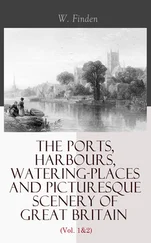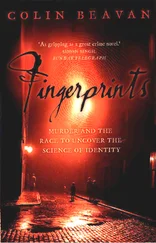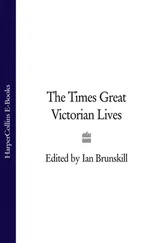The national mood, though, was with Bowyer. 'We can unhesitatingly state the public feeling,' claimed the Frome Times. 'An officer who can play at hap-hazard with such an awful charge as that of wilful murder, and can promise that which he must have known he could not perform, cannot expect to be looked on otherwise than with distrust.' 'The Whicher theory has failed to throw any light whatever upon the thick darkness of this horrible mystery,' said the Newcastle Daily Chronicle. 'A new clue must be discovered before justice can thread the mazes of the labyrinth of Road.' The Morning Star was dismissive of the 'frivolous, gossiping, and utterly vapid school-girl testimony' upon which Whicher had relied.
The Bath Chronicle criticised 'the slender speculations which were loosely strung together and adduced as evidence . . . the experiment made, has been a fearfully cruel one'. In an essay in the Cornhill Magazine, the distinguished lawyer Sir James Fitzjames Stephen argued that the cost of trying to solve a murder - the damage wrought by the exposure, the police intrusion - was sometimes too high: 'The circumstances of the Road murder are extremely curious, because they happen to afford an illustration of the amount of this price so exact that had it been committed on purpose it could hardly have been better arranged.' Since no other culprit could be found, Whicher was blamed for the muddle and mystery of Road. The 'Disciple of Edgar Allan Poe' played on the sinister associations of his name when he noted in his pamphlet that 'Constance is recognised as innocent, though metropolitan witchery once jeopardised her.'
One of the most damaging charges laid against Jack Whicher was that he was driven by greed. The early detectives were often presented as glamorous rogues, only a step away from the villains they sought. The French felon-turned-detective Eugene Vidocq, whose heavily fictionalised memoirs were translated into English in 1828 and dramatised for the London stage in 1852, had breezily swapped villainy for police work when it served his financial interests.
The rewards that detectives could earn were descendants of the eighteenth-century 'blood money' paid to thief-takers or informants. In August 1860 the Western Daily Press scornfully alluded to Whicher's 'zeal sharpened by the offer of a handsome reward'. A letter from 'Justice' in the Devizes and Wiltshire Gazette compared Whicher to Jack Ketch, a notoriously clumsy seventeenth-century hangman who inflicted great suffering on his victims: Whicher was 'utterly irresponsible', wrote 'Justice', 'tempted with the vision of PS200 reward, getting a young lady of 15 incarcerated in a common gaol for a week'. Like many correspondents, 'Justice' showed distaste for the working-class fellow who had meddled in middle-class affairs. The detectives were greedy and inept because they were not gentlemen. Perhaps Whicher was so vehemently condemned because he was doing in fact what the legions of new newspaper readers were doing in the mind's eye - peeping and prying, goggling and wondering at the sins and sufferings of others. The Victorians saw in the detective a picture of themselves, and in collective self-revulsion they cast him out.
A few voices were raised in Whicher's defence. The ever-loyal Somerset and Wilts Journal criticised Edlin's 'ingenious bamboozling', and the 'cunning trick' whereby he had distorted the theory about the nightgown. The Daily Telegraph agreed: 'We cannot concur with Mr Edlin in his fervid denunciations of the cruelty of arresting this young lady . . . To believe the ad captandum reasoning of this young lady's advocate, the important point of her garment not being forthcoming has been satisfactorily cleared up; but the contrary would seem to be the case. Where is the nightgown? . . . Far different would it have been if a bedgown stained with blood had been discovered. Some of our readers may remember the awful circumstance of the gory sheet in the story of Beatrice Cenci. That one link would complete a chain of evidence that would speedily change into a halter of hemp.' Beatrice Cenci was a sixteenth-century Roman noblewoman executed for killing her father; in the nineteenth century she had become something of a romantic heroine, the beautiful avenger of a violent, incestuous bully. A bloody bedsheet provided proof of her guilt. Shelley cast Beatrice as an impassioned rebel in his verse drama The Cenci (1819). A character in Nathaniel Hawthorne's The Marble Faun (1860) describes her as 'a fallen angel, fallen and yet sinless'.
The Northern Daily Express remarked that 'The nightdress of Constance Kent, with plain frills - the wearer not having reached the years of maturity and lace - bids fair to become as famous as the ruffs of Queen Elizabeth and Shakespere, the snuff-coloured suit of Dr Johnson, Cowper's nightcap as painted by Romney, or the striped waistcoat of Burns.'
Henry Ludlow, the chairman of the Wiltshire magistrates, continued to lend Whicher his support. 'Mr Inspector Whicher's conduct in regard to the Road Murder has been much blamed,' he wrote in a letter to Mayne. 'Mr Ludlow feels much pleasure in bearing testimony to his good judgment and ability in the case. I fully agree with Mr Whicher as to the perpetrator of that most mysterious murder . . . he was perfectly justified in acting as he did.' Perhaps Ludlow felt guilty for the part he had played in encouraging Whicher to arrest Constance. All the blame for the case had attached to the detective.
'I beg further to report,' began Whicher on Monday, 30 July, 'for the information of Sir R. Mayne in reference to the murder of "Francis Saville Kent" at Road Wilts on the night of the 29th June that the re-examination of "Constance Kent" took place at the Temperance Hall Road on Friday Last . . .'
Over sixteen pages, in a forward-thrusting hand, Whicher argued his case. He irritably discounted the various rival theories advanced by the letter-writers and the journalists. He expressed his frustrations with the local police investigation: the evidence against Constance 'would have been far more conclusive', he said, 'if the Police had ascertained as soon as they arrived, how many night gowns she ought to have had in her possession'. If Foley had only 'taken the hint given ' by Parsons as to the nightdress on Constance's bed appearing very clean, and had 'interrogated her at once as to how many she had in her possession I believe the blood stained bed gown would have been missed at once and possibly found '. Constance's lawyer, Whicher complained, had 'said that the mystery respecting the missing night dress had been cleared up, but such is not the case, as one of her three which she brought home from school is still missing and I have possession for the present of the remaining two'. He suspected that a confession would come soon but 'would no doubt be made to some of the family, and then possibly not made known'.
Whicher signed but did not send the document. Shortly afterwards he scratched out his signature and continued: 'I beg further to report . . .' and wrote two more pages, expanding and clarifying his findings. And nine days after that, still unable to let the matter rest, he resumed: 'I beg to add the following remarks and explanations . . .' The report that he submitted to Mayne on 8 August - twenty-three pages in total - was strewn with inky underlinings, corrections, adjustments, insertions, asterisks, double asterisks and crossings-out.
CHAPTER THIRTEEN
A GENERAL PUTTING OF THIS AND THAT
TOGETHER BY THE WRONG END
August-October 1860
In early August, with the Home Secretary's permission, the Wiltshire police exhumed Saville Kent's body. They said they hoped to find his sister's nightdress hidden inside the coffin. It was as if the police, in their frustration, could do no more than return to where they began. The officers dug up and unscrewed the box, but were faced only with Saville's corpse in its death robes. The foul gases that emanated from the coffin were so powerful that Superintendent Wolfe fell ill, and did not recover for several days.
Читать дальше












